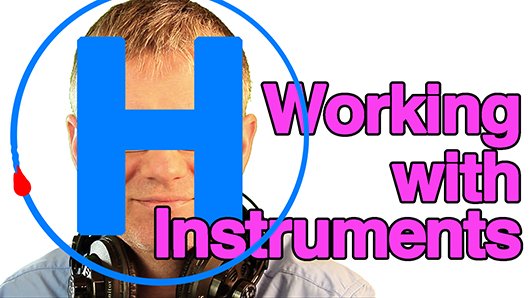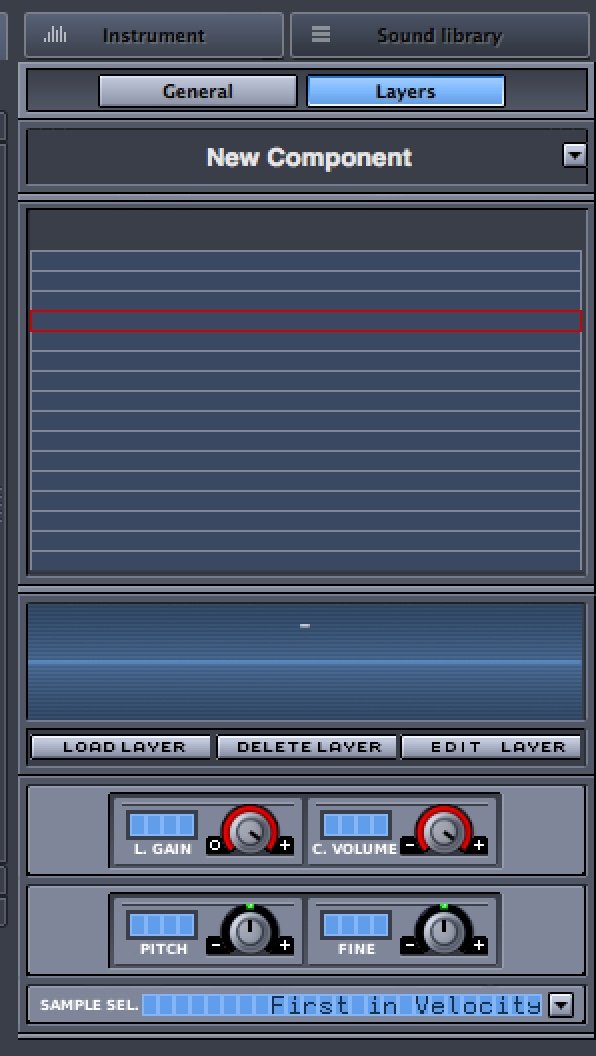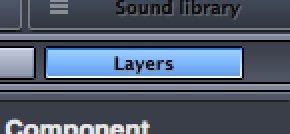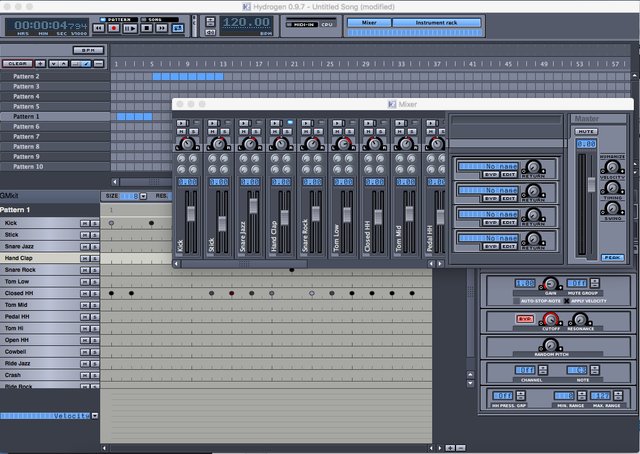Hydrogen Drum Machine - New Instruments, Loading Samples & Multiple Sample Sounds
What Will I Learn?
- You will learn how to create a new instrument within and existing drum kit.
- You will learn how learn how to load your own sound samples into an instrument as a component.
- You will learn how to combine multiple components into an instrument to create a multi-layered sound.
Requirements
To complete this tutorial learners will need to have the following:
- The software application Hydrogen installed
Difficulty
This tutorial is at an Advanced level. It is strongly advised that learners complete the previous tutorials in this series before attempting this tutorial.
Description
How to Create a New Instrument
In Hydrogen we can have numerous instruments within one drum kit. Most drum kits have a kick drum, snare, hi hats, etc. Hydrogen allows us to also add instruments of our own. You may have a unique drum or aux percussion sound that you want to include, this is easy in Hydrogen.
Go to the Instruments pull-down menu at the top of Hydrogen and choose Add Instrument. This will create a new instrument in the Pattern Editor.
Next make sure Instrument Rack is selected in the top right of Hydrogen. This will open your Instrument Rack window. In this window click the Instrument Tab at the top and you will see the settings for your new instrument. You can use these setting to make adjustments to this new instrument.
Loading Costum Sound Samples into New Instruments
Hydrogen allows us to load new sound samples into existing instruments or into new instruments that we have created.
Click Layers and in the middle of the window choose Load Layer. This will open a browser window which will allow you to find a sound sample of the sound you want to include as your new instrument. Click open and this will load your sound sample into your new instrument.
You can now use that sound sample in the pattern editor as your new instrument.
You will want to consider what file format you are planning to use with your instrument. I recommend using WAV files. I have a tutorial on the difference in compressed and uncompressed audio files as they are using in Audacity, but the same principles apply here.
https://steemit.com/utopian-io/@buckydurddle/audacity-tutorial-8-and-17-of-25-exporting-mp3-and-wav-files-and-metadata
Adding Multiple Sound Samples into One Instrument
Instrument sounds in Hydrogen can be made up of several sound samples all playing at the same time. This is done by adding multiple "Components."
Let's assume you have an instrument selected in the Pattern Editor to which you would like to add another sound Sample. In the "Layers" tab of the Instrument Editor window you will find a small pull down menu arrow. Click this and choose "Add."
This will add a new component to the instrument. Give the new component a name and click Open. Next choose Add Layer and choose a new sound sample you want to use and click Open. Now the instrument has two sounds with play at the same time. Very cool.
I encourage you to spend time experimenting with Hydrogen to get used to composing your rhythms. You can make some unique and exciting rhythms by exploring how these rhythmic divisions interact. Be sure to save your work often and keep your beats in an organized folder.
Hydrogen is an open source application, which means that it is free for everyone to use. Please consider going to the developers' website and show your support for the project - http://www.hydrogen-music.org/
I hope you enjoy this tutorial. If you have any specific questions for me feel free to leave it in the comments of this post and I will do my best to get back to you with an answer.
Cheers,
@buckydurddle
Video Tutorial
Curriculum
Learn Hydrogen Series
If you would like to learn how to use the open source drum machine Hydrogen, then have a look at these tutorials:
Hydrogen - UI Layout & Basics
Hydrogen - Rhythmic Resolution
Hydrogen - Effective Beat Making
Hydrogen - Song Editor, ADSR, Importing DrumKits from Respositories
Hydrogen - Humanize (Velocity, Timing & Swing)
Learn Helm Series

If you would like to learn how to use the open source software synth Helm, then have a look at these tutorials:
Helm 1st Oscillator Video Tutorial
Helm 2nd Oscillator Video Tutorial
Learn Audacity Series

If you would like to learn how to use the open source sound recording and editing software Audacity then have a look at these tutorials:
1 How to Create a New Audacity Project
2 How to Open or Import Audio Files in Audacity
5 How to Save an Audacity Project
7 How to Set Input Volume Levels
8 How to Export MP3 and WAV Files
9 How to Select and Delete Sound
ACTIVITY 1 - My First Recording
10 How to use Undo and History in Audacity
12 How to Use the Time Shift Tool
13 How to Use the Change Pitch Effect
ACTIVITY 2 - Make Your Voice Sound Like a Chipmunk
14 How to Use the Fade In & Fade Out Effects
15 How to Download Sound Samples from the Internet
16 How to Use the Amplify Effect
ACTIVITY 3 - Multitrack Recording in Audacity - Beatbox
21 How to Use the Change Tempo Effect
22 How to Use the Equalization Effect
ACTIVITY 4 - How to Mess Up a Piece of Music
25 How to Remove Vocals from a Recording
SETUP - How to Install the LAME Encoder
Logo - http://tytel.org/helm
Logo - https://www.audacityteam.org/
Logo - http://www.hydrogen-music.org/hcms/
Posted on Utopian.io - Rewarding Open Source Contributors







Very cool tutorial @buckydurddle, I wasn't familiar with Hydrogen, definitely something to check out. Looks like with some twiddling it can run on the Raspberry Pi that I have lying around collecting dust and have been thinking of turning into a musically useful device. Thank you for sharing!
Now that would be cool. I would like to see that. I never thought of running it on a Pi. I have a couple kicking around here. I would be interesting to make a nice portable drum machine with that. Hydrogen is very nice. The more I use it the more I like it. The UI has some sharp edges, but it is very functional.
If you do decide to instal on the Pi let me know how it goes.
Cheers,
Bucky
I quickly Googled it to see if it'd work after I saw Hydrogen being a Linux app, and apparently there are some sound issues, but nothing too crazy. Now that you mention that, I feel pretty inspired to create a post at some point about making your Pi into a music Pi, I keep seeing things here and there about people using it for variety of purposes so it could be nice to gather all that info up :) I will definitely check out Hydrogen, thank you!
Thank you for the contribution. It has been approved.
You can contact us on Discord.
[utopian-moderator]
Hey @buckydurddle I am @utopian-io. I have just upvoted you!
Achievements
Community-Driven Witness!
I am the first and only Steem Community-Driven Witness. Participate on Discord. Lets GROW TOGETHER!
Up-vote this comment to grow my power and help Open Source contributions like this one. Want to chat? Join me on Discord https://discord.gg/Pc8HG9x